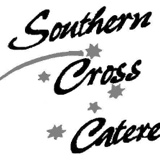Information
-
Audit Title
-
Station
-
Flight
-
Tail
-
Gate
-
Auditor
-
Document No.
-
Conducted on
STAFFING
-
List the names of staff working the flight. If not applicable, indicate N/A in the appropriate space.
Ramp
-
Ramp Name
-
Fueler Name
-
Jetway Name
RAMP OVERVIEW
Ground Service Equipment
-
Ground service equipment appears to be in good working condition (check tires, belt condition, curtains on carts where needed, operating fuel gauges, no red tags).
-
Ground equipment operated within SCA policy and airport directives.
-
When parked outside clearance area, equipment is chocked or parking brakes set.
-
Appropriate driving speeds observed
-
Brake checks observed
-
Adequate equipment (bag carts, tugs, belt loaders) available for flight.
-
Aircraft chocks (3 sets) and cones (5) available. Properly stowed when not in use.
-
Water is serviced from FDA-approved source.
-
Potable water hoses capped.
Ramp Condition
-
General condition of ramp meet SCA requirements (clean & safety zone clear).
-
Ramp markings adequate (J-line, stop marks and safety zone).
-
If night, proper lighting adequate for safe ramp operation.
Jetway Condition
-
Rubber bumpers installed and in good condition.
-
Overall condition of tires and jetway acceptable (canopy, leveler, alarms).
-
Lock on door leading to aircraft/ramp so aircraft access is secure.
-
Control panel functioning properly. Check lights.
Safety (NFPA 10.30)
-
Protective clothing worn by ramp staff (high visibility gear, ear plugs/no headphones).
-
Fire extinguisher available at gate; serviceable and properly placed.
-
Fire extinguisher inspections current.
-
Date last serviced:
-
Fire lanes clear.
-
First aid kits available where required.
-
Staff can locate safety equipment (alarms, extinguishers, Emergency Shut Off for fuel)
RAMP OPERATION
Pre-Arrival
-
FOD inspection completed.
-
Equipment positioned properly outside safety zone.
Arrival
-
Aircraft marshaled to gate with properly equipped crew (2 wing walkers and 1 guide person with day-glo or lighted wands).
-
Nose wheel chocked.
-
GPU connected properly when available.
-
Rotating beacon stopped before ramp staff approach danger zone.
-
Both main gear chocked. Chock-in signal provided after ALL gear are chocked.
-
Jetway moved to aircraft safely.
-
Cones placed under engines, at wing tips, and tail.
-
When cargo doors opened, cargo nets for all zones were fastened.
-
Belt loaders positioned at aircraft with guide person. Belt does not extend into aircraft or touch fuselage. Positioned at door sill.
-
Bags unloaded properly. Balance maintained when unloading; aft bins unloaded first.
-
Special handling items brought planeside.
-
Priority items brought to carousel first.
Pre-Departure
-
Exterior aircraft search completed (for first flight or international arr/dep).
-
Baggage loaded properly.
-
Count performed planeside, noted on load plan. Heavy items counted separately
-
Balance maintained when loading items in Zone 2 and 3.
-
Mobility devices loaded and stowed properly (EWCHRs secured to cleats in Z2/Z3)
-
Priority/transfer/interline/pets/pink tagged items loaded and stowed properly.
-
Two (2) inch space maintained between top of bags and ceiling
-
Cargo doors closed when unattended or during inclement conditions.
-
Cargo/Mail/COMAT handled and loaded properly; manifest completed properly.
-
Fueling
-
Fire extinguisher inspections current.
-
Date last serviced:
-
Vehicle/cart equipped with signs and placards (No Smoking & Jet A).
-
Vehicle/equipment positioned properly – away from wing tip vents.
-
Bonding reels, cables and clamps used to ground aircraft.
-
Fueler in attendance while fueling and using deadman switch.
-
Water/lavs serviced properly.
-
Equipment positioned and chocked properly using guide person.
-
Protective equipment used (vinyl gloves).
-
Fluid Levels appropriate (flush and fill with five gallons).
-
Hoses disconnected after fill and panel doors secured.
-
Lav gloves changed before servicing water.
-
Glycol added (50/50) in winter ops conditions.
-
Catering service provided.
-
Guides used to position vehicle.
-
Vehicle chocked or stabilizers lowered safely.
-
Lift platform raised and lowered safely.
-
Cargo nets secured and aircraft door closed properly.
-
Load information/pet tags provided to crew 10 minutes prior to departure.
-
Ground service equipment moved away from aircraft.
-
FOD check completed.
-
Walk around inspection performed to ensure all panels & doors secured.
-
Chocks and safety cones removed and stowed outside of safety zone.
-
Ground power disconnected. Power cord positioned safely.
-
Towbar connected properly for pushback. Towbar connected to aircraft first, then tug. Proper bypass/lockout pin used.
Departure
-
Marshaling crew positioned properly (2 wing walkers and 1 guide person with proper equipment (day-glo or lighted wands).
-
GPU cord/unit positioned away from aircraft.
-
Jetway operated properly.
-
Operator checked ground equipment location before moving jetway.
-
Operator ensured GPU, PCA disconnected before moving jetway.
-
Canopy retracted properly.
-
If no jetway, proper staff positioned on ramp to ensure safe path to airstairs. Smoking restrictions enforced.
-
Pushback performed. Towbar disconnected from tug first, then aircraft.
-
Headset cord disconnected from aircraft and access panel secured.
-
Bypass pin displayed to pilot.
-
Proper marshalling procedures used
-
Equipment parked properly with brakes set and wheels chocked.
Ground Procedures (if APU inoperative)
-
Air start truck positioned with exhaust directed away from aircraft.
-
Air start hose cleared to ensure it is free of debris and connected to A/C.
-
Air start removed after engine started and access panel secured.
FINDINGS/ROOT CAUSE
-
Observed station practices are acceptable
-
Corrective Action is necessary
Please list each Finding and identify Root Cause below: (examples: Human factor; Environment; Inadequate training; Procedures not followed)
CORRECTIVE ACTION
-
Please list Corrective Actions for each finding below:
FOLLOW UP
-
Corrective action was reviewed with:
-
Title:
-
Signature of GH:
-
Date:
-
No Review was Conducted












